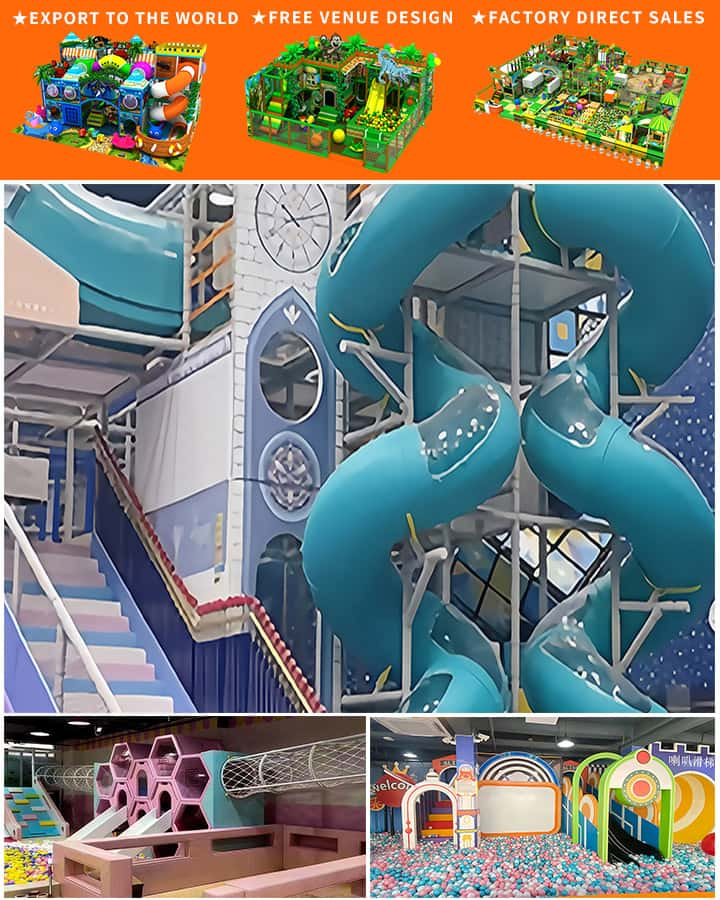Creating an enjoyable and safe indoor playground for toddlers can be a rewarding yet challenging endeavor. The right equipment not only fosters physical development but also encourages social interaction, creativity, and cognitive growth. This guide will walk you through key considerations and tips for selecting the best indoor playground equipment for toddlers.
Safety First: Non-Negotiable Considerations
When it comes to toddlers, safety is paramount. Always ensure that the equipment meets stringent safety standards and certifications. Look for smooth edges, non-toxic materials, and sturdy construction. It’s also advisable to check for potential hazards such as small parts that could pose choking risks.
Age Appropriateness
Toddlers have varying needs based on their age and developmental stage. For younger toddlers (ages 1-2), consider soft play structures like foam blocks, ball pits, and mini slides. Older toddlers (ages 3-5) might benefit from more complex structures such as climbing walls, tunnels, and trampolines with safety nets.
Types of Indoor Playground Equipment
Soft Play Areas: Filled with foam mats, soft shapes, and small obstacles, soft play areas are perfect for developing motor skills in a safe environment. They are especially suitable for younger toddlers who are still mastering crawling, standing, and walking.

Climbing Structures: Climbing walls, ladders, and ropes provide excellent opportunities for physical exercise and help build confidence and coordination. Ensure these structures have guardrails and are made from durable materials to prevent falls and injuries.
Slides: A classic favorite, slides can add fun to any indoor playground. Choose gentle slopes for younger children and more adventurous designs for older toddlers. Make sure slides are wide enough to prevent falls and have secure landing zones.
Trampolines: Trampolines with enclosures are great for burning off energy and improving balance. Ensure the trampoline has a safety net to catch little adventurers in case they lose their footing.
Interactive Toys: Incorporate interactive elements like musical instruments, sensory toys, and activity panels. These not only keep toddlers engaged but also support cognitive and sensory development.
Space Considerations
The size of your indoor playground should be proportionate to the available space. Measure your area carefully and choose compact, multifunctional equipment that maximizes the use of space without overcrowding. Modular playsets can be particularly useful as they can be rearranged to fit various configurations.
Material and Durability
Indoor playground equipment should be made of high-quality, durable materials that can withstand constant use. Wooden structures often provide a natural, aesthetically pleasing look but require maintenance to prevent splinters and wear. Plastic and foam options are generally easier to clean and maintain but may not offer the same longevity as wooden structures.
Maintenance and Hygiene
Regular maintenance is crucial to keep the indoor playground safe and hygienic. Clean soft surfaces regularly with mild soap and water, and vacuum or wipe down hard surfaces to remove dust and grime. Inspect equipment periodically for signs of wear and tear, and replace any damaged parts immediately.
Budget-Friendly Options
High-quality indoor playground equipment can be a significant investment. However, there are budget-friendly options available that don’t compromise on safety or durability. Look for sales, second-hand options, or DIY kits that offer customization at a lower cost.
Conclusion
Selecting the right indoor playground equipment for toddlers involves careful consideration of safety, age appropriateness, space, material, and maintenance. By prioritizing these factors, you can create a fun, stimulating, and safe environment that supports your child’s physical, social, and cognitive development. Happy playing!




